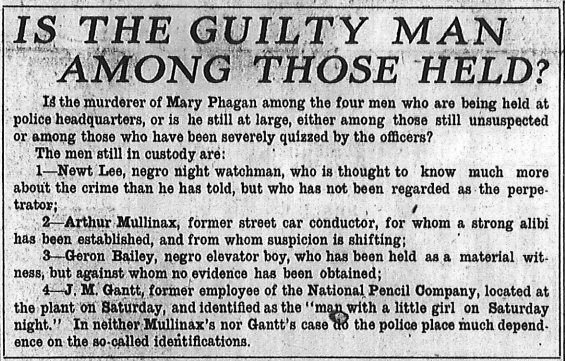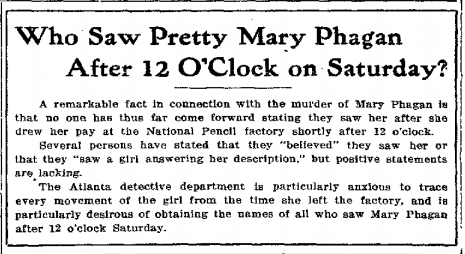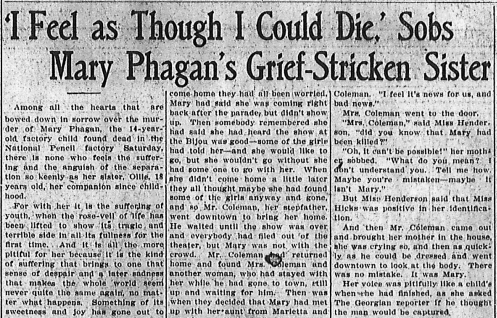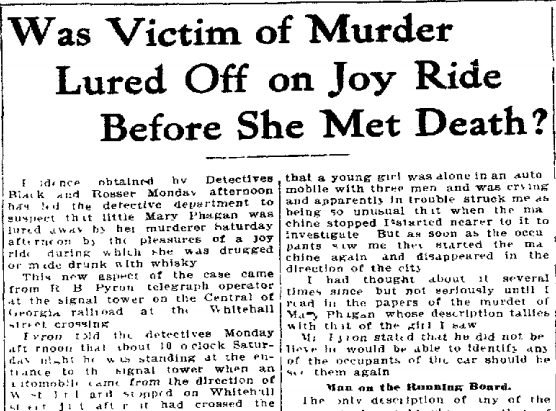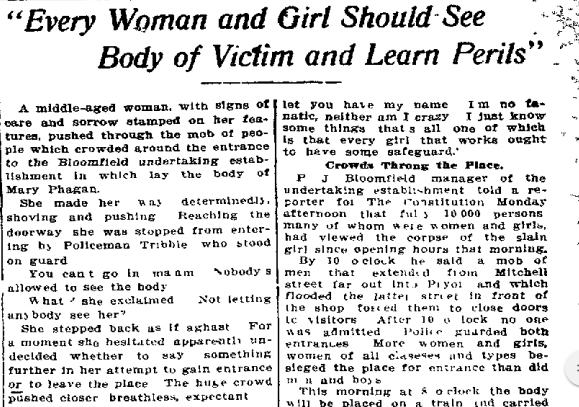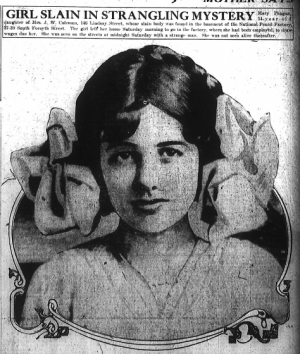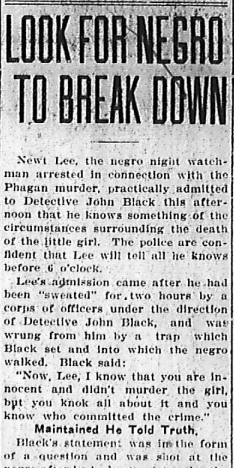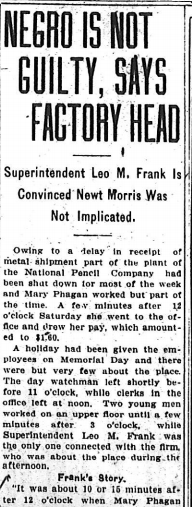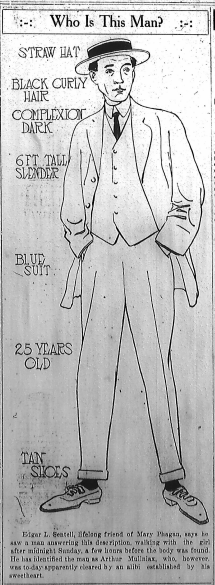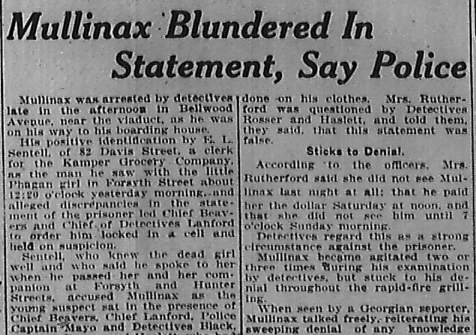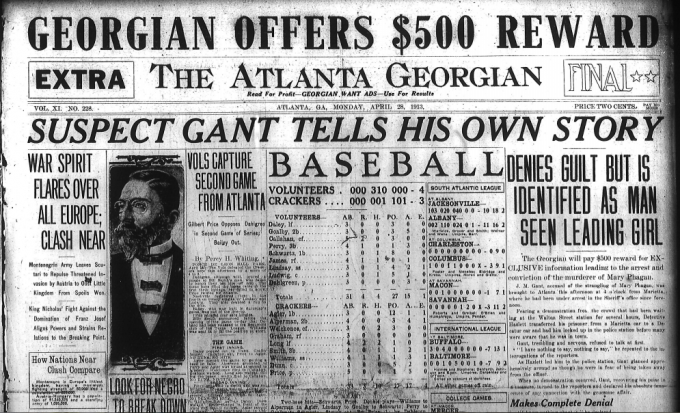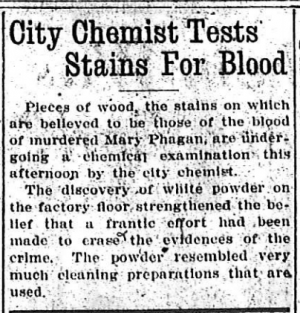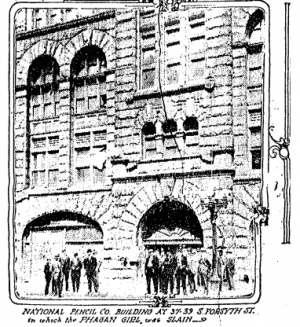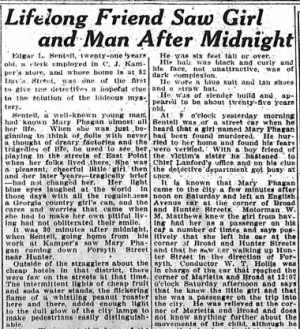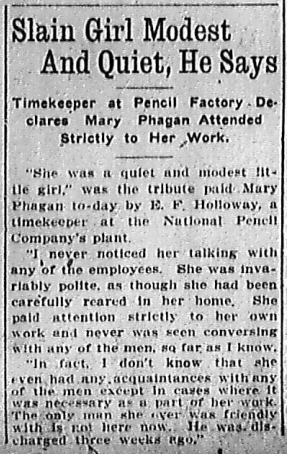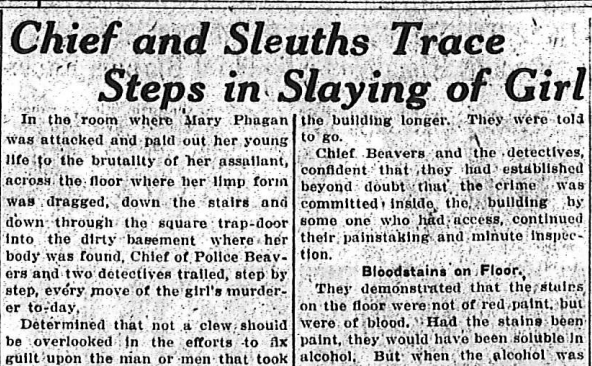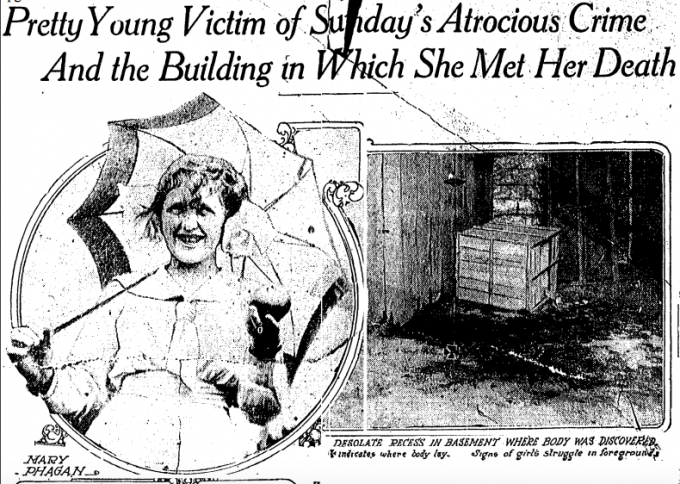Another in our series of new transcriptions of contemporary articles on the Leo Frank case.
Atlanta Georgian
Tuesday, April 29th, 1913
Is the murderer of Mary Phagan among the four men who are being held at police headquarters, or is he still at large, either among those still unsuspected or among those who have been severely quizzed by the officers?
The men still in custody are:
1—Newt Lee, negro night watchman, who is thought to know much more about the crime than he has told, but who has not been regarded as the perpetrator;
2—Arthur Mullinax, former street car conductor, for whom a strong alibi has been established, and from whom suspicion is shifting; Continue Reading →

